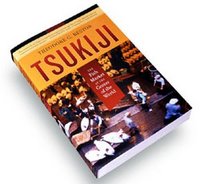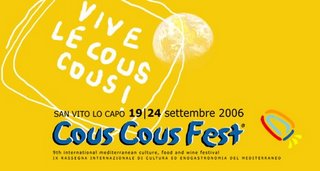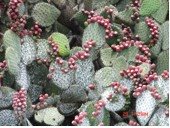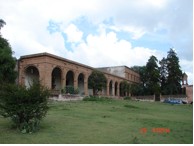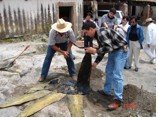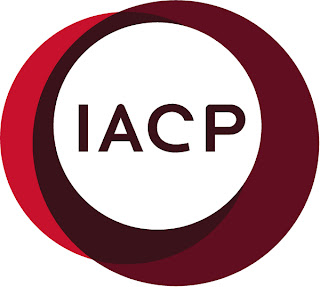
by Scott Givot
The food was then placed back down on the floor in front of me and Pauline left the room. I managed to turn on my side to eat. The potatoes were hot and the chicken did not taste too bad. I picked up a spoonful of gravy and poured it over my arm; the bloody blob melted and started to make its way down my arm. I poured another spoonful of gravy over it and then used the little finger of my left hand to make a bloody puddle on my arm. When all the blood was moist, I cut open a potato and used to clean my arm. Then I put the bloody potato on the carpet and ate my dinner.-Constance Briscoe from her book,
UglyThis passage occurs when the author was of pre-adolescent age and following a row with her Mother ensued about her cooking. The author’s Mother, Carmen Briscoe, had abused her daughter throughout her entire childhood and even turned a blind eye following the sexual abuse by her step father. In this chapter she took up a kitchen knife and slashed her child’s arm.
It is but one icon to recall in the remarkable journey of a woman, who survived a treacherous and tormented path to adulthood. How it that this child has become so accomplished today and specifically one of Britain’s only black woman judges? Her account is narrarated with a particular naiveté and subtle humour. The ending to this first memoir bestows the reader with a sense of jubilation and admiration for Briscoe’s sheer pursuance and subsequent accomplishment of her dream.
Ugly was number one on London’s
The Sunday Times bestseller list for roughly six months and is soon to be published in paperback. It is currently being sold in a multitude of languages throughout the world, including its launch in Norwegian last Friday. This is the context in which I came to interview Constance Briscoe. Our meeting was driven less by discussion of the storyline, although that was the source of my initial interest. It was, rather, a consequence of being touched by deep references to food memory and the weft patterned in the fabric of her life.
We met the evening of her arrival at the British Embassy in Oslo How could a woman, who had only been named “ugly”, emulate such exquisite qualities so pleasurable to the beholder? When asked, she is quick to explain the assistance of a talented friend, who just happens to be a plastic surgeon. Still there is something more. Constance Briscoe has a voice, which is child like and a tone that reflects simple wisdom and honesty. She has the face of someone who has endured great pain and has processed her experiences into transformation.
How does she manage to smile after enduring such challenges?
That was my experience. I didn’t know anything else…that’s ALL, she explained.
We agreed to meet the next morning in the breakfast room at her hotel. I convinced her to have a bit to eat, when she informed me that she never has anything but five cups of English breakfast tea, black and with no sugar for her first meal. She reluctantly accepted a glass of orange juice and small fruit plate consisting of two slices of pineapple, two slices of honeydew melon and one orange segment, which I offered to her. Why didn’t she care for more, as I proceeded to eat smoked salmon, cheese, a soft cooked egg and flatbread?
Because...I’ve never had breakfast. My first meal of the day was always school dinner... I couldn’t wait to leave the house and always attempted to avoid a meeting with my Mother at the cost of sacrificing the breakfast meal. At what time did you lose your food virginity?She paused for at least three minutes.
Interesting question... I have to think about that… I told her to take her time and fiddled with my pen. Finally she responded with deliberation.
Brown sponge pudding and pink custard…because it works. I used to receive this for my school meal. You see, when the pudding is baked, it rises and pin holes form at the top. The custard has pinholes at the bottom. Put them together and…IT WORKS! Then as if thawing from the deep freeze of recollection, the fruit that I enjoyed was the pomegranate. First you cut it in half and then you take your time to take each seed out. It’s the adventure. When I have enough seeds collected to the side of my plate, I eat them.Suddenly she took off.
My favourite food is an anchovy. Why?
Just is...and my favourite biscuit is a “Jammy Dodger”! It got me out of a lot of trouble as a child. You see...you separate the two biscuits with jam and custard, which provides three opportunities to eat the biscuit. She proceeded to draw an illustration on a paper serviette. The first drawing was a circle (the bottom layer), the second was a circle of equal dimension, with a hole in the centre (the top layer) and the third was a small blob which represented the jelly in the hole. This she would scoop out and eat at the end. Meanwhile the custard, which held the two halves together, could be licked off the biscuits if she so desired.
The tea lady in the barristers’ chambers stocks “Jammy Dodgers” now and I have one every day. So do all the barristers.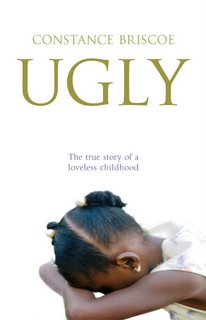
At the risk of feeling deeply penitent, I asked her what she would choose as her last meal on earth. I was not surprised with her answer, given her strict Catholic schooling as a child.
Fish and chips. I’m assuming that it (her last day on earth)
is a Friday and Catholics eat fish and chips on Fridays. Catholic school never served meat on Fridays. We had fish and chips. That represents the body of Christ. So...for my last supper I’d have 4-5 cups of tea to begin the day and finish off with pink custard and brown pudding. My life has always been a struggle to get food. It takes a long time to have a preference, when it is a struggle to get food in the first place. One can’t be fussy!”At this moment she showed me some of her scars, including the burn from a cigarette, which her stepfather extinguished on her hand and the long gash mark from her Mother’s quick flash with the kitchen knife along the length of her left arm.
I keep away from rice. (She was preparing rice when her stepfather, Eastman, burned her.)
I have a problem with chicken because I cooked so many when I was growing up. (She was preparing a family chicken dinner when her Mother cut her.)
When I DO eat chicken, I always check for feathers, because I had to pluck them all the time. What other food memories do you have that make you feel good?
Father was a superb cook. He made the best ever Jamaican food...fried plantain, fried snapper...and I would have a mango. We didn’t see him very often, but he’d always buy a fresh turkey at Christmas with the head still on. He showed us that when the eyes went grey, the turkey had been dead just a little while. My sisters and I had to pluck all the feathers. Sometimes when he came to visit, we got to eat a fresh coconut. That wasn’t too often. They were pretty messy. What spices or herbs do you remember from your childhood family food?
Let’s see...bay leaf was always used in rice and porridge. Thyme was added to soup. Mint was always used for meat because Mother grew it in the garden. I can also remember jerk chicken seasoning. It was made of thyme, crushed peppercorns, sage, parsley...and a lot of nutmeg was used too. Do you have a garden now?
Yes. We have a country home with a camomile lawn. We have an herb garden with sage, coriander, thyme, parsley...lots of different types. We also have an organic vegetable garden with broad beans, cauliflower, spinach, potatoes, onions, courgettes, tomatoes...What about your children, Constance? Do they have interest in their Jamaican culinary heritage? What do they like to eat?
I keep away from making all types of Jamaican food. We make it...maybe...once a year. They (the children)
have modern tastes. Given a choice, my 16 year old daughter, Francesca, would eat steak! She also likes salmon, olives, cheese...and her favourite dish is hummus. My 19 year old son, Martin, has preferences based on his travel experience. I think it’s a fashion he’s going through. He would probably choose sushi as his favourite food, based on his recent seven month trip through the orient.I thanked Constance for her time and also asked her what she and her partner, Tony would like for me to cook for them.
Fish...because it’s Friday. No rice, please. What about a fresh wild mushroom risotto, I ventured.
That’s ok. My kids complain that we make too much risotto, but I love it.I left them at the entrance to the hotel and walked into the sunshine under a radiant blue sky, which Constance told me was her favourite colour…this particular blue. I recollected the challenges she faced ahead including the passing of her A-levels with good grades in order to qualify for a scholarship to the Law Department at Newcastle-upon-Tyne. When questioned as to whether or not she could accomplish this mammoth task, her response was quite simply,
Easy-peasy.
 Fellow IACP members who blog may want to know about Denise Graveline´s forthcoming "blogging-for-your-business" workshops (both beginner and advanced) coming up in late October in Washington, DC.
Fellow IACP members who blog may want to know about Denise Graveline´s forthcoming "blogging-for-your-business" workshops (both beginner and advanced) coming up in late October in Washington, DC. 


